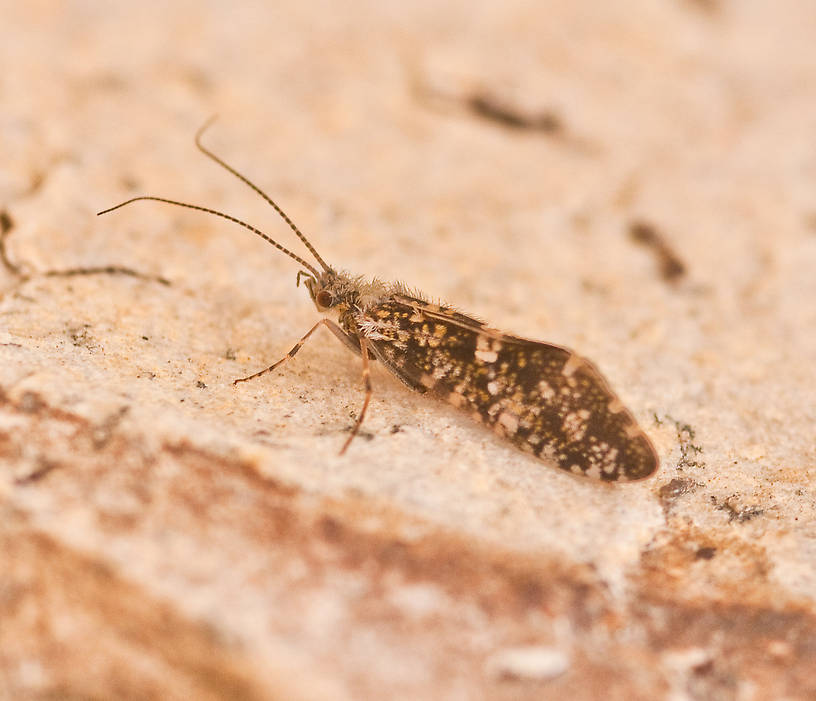
Salmonflies
Pteronarcys californica
The giant Salmonflies of the Western mountains are legendary for their proclivity to elicit consistent dry-fly action and ferocious strikes.
Featured on the forum

Troutnut is a project started in 2003 by salmonid ecologist Jason "Troutnut" Neuswanger to help anglers and
fly tyers unabashedly embrace the entomological side of the sport. Learn more about Troutnut or
support the project for an enhanced experience here.
Saddle-case Makers
This common name refers to only one family. Click its scientific name to learn more.
Caddisfly Family Glossosomatidae
These are often called Saddle-case Makers.
This family is one of the primitive caddisflies of the Rhyacophiloidea superfamily. However, they are not free-living like their better known cousins the Rhyacophilidae (Green Rockworm). Instead they build rounded "turtle" shaped cases that do not surround the larvae but are rather attached to the rock surface at their margins. Underneath is a sling made of secretions upon which the larvae ride, hence the common name Saddle-case Makers. There are four genera of possible interest but only one is generally recognized as important to anglers. See Glossosoma (Little Brown Short-horned Caddis) for details. The other three are so tiny that they are also called Pseudo-microcaddis.
Protoptila (Tiny Spotted Short-horned Caddis) is rarely important in trout streams and is generally found in warmer, larger water than the other two genera.
Agapetus (Tiny black Short-horned Caddis) is quite common in many northern streams.
Matrioptila is an extremely tiny southern genus.
Protoptila (Tiny Spotted Short-horned Caddis) is rarely important in trout streams and is generally found in warmer, larger water than the other two genera.
Agapetus (Tiny black Short-horned Caddis) is quite common in many northern streams.
Matrioptila is an extremely tiny southern genus.

I caught this tiny larva without a case, but it seems to key pretty clearly to to Glossosomatidae. From there, the lack of sclerites on the mesonotum points to either Glossosoma or Anagapetus. Although it's difficult to see in a 2D image from the microscope, it's pretty clear in the live 3D view that the pronotum is only excised about 1/3 of its length to accommodate the forecoxa, not 2/3, which points to Glossosoma at Couplet 5 of the Key to Genera of Glossosomatidae Larvae.
See 2 more specimens...



